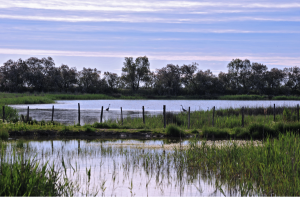Finally, the Rule is Final: What the Newly Revised Definition of Waters of the United States Means for Your Project

Last October, I wrote about the proposed revisions to the definition of waters of the United States under the Clean Water Act. That proposal generated thousands of comments and questions regarding the changes, which led to another round of scientific and administrative review by EPA. On May 27, 2015 EPA published the final rule defining “Waters of the United States” under the Clean Water Act. The final Clean Water Rule differs from both the old rule and the proposed rule in some ways. However – the punch line is this – federal jurisdiction over waters has been carefully expanded to include many types of waters that previously were excluded or which had to be individually evaluated for federal jurisdiction.
Here is a brief summary of what the newly effective definition means for permitting:
- The definition of navigable waters, interstate waters, territorial seas and impoundments remains the same; all are still jurisdictional waters of the U.S.;
- The definition of tributaries to traditionally navigable waters has been added and includes water features with bed, bank, ordinary high water mark (OHWM), and flow downstream. These are jurisdictional. Wetlands and open waters without bed, bank, and OHWM will be evaluated for “adjacency” (see # 3);
- “Adjacent Wetlands/Waters” is defined to include all waters adjacent to jurisdictional waters within a minimum of 100 feet and within the 100-year floodplain to a maximum of 1,500 feet of the OHWM. Adjacent wetlands and waters are now jurisdictional (no more individual evaluation required.)
- Isolated or “Other” Waters that are defined as jurisdictional include specific waters that are similarly situated to the waters described in #s1-3: Prairie potholes, Carolina and Delmarva Bays, pocosins, western vernal pools in California and Texas coastal prairie wetlands are included when they have a significant nexus to jurisdictional waters. The definition also includes waters with a significant nexus to jurisdictional waters located within the 100 year floodplain of a navigable water, interstate water or territorial sea, and waters with a significant nexus to jurisdictional waters located within 4000 feet of such waters.
- Exclusions from the definition (non jurisdictional water bodies) include waste treatment systems, prior converted cropland, ditches that are constructed outside of streams and flow only when it rains, groundwater, gullies, rills and non-wetland swales, constructed components for MS4s and water delivery/reuse and erosional features.
EPA asserts that the new final rule is valuable to the development community in that it provides certainty regarding jurisdiction. By using distance as one criterion for determining the significance of the relationship between a wetland and a nearby jurisdictional water, and by focusing on streams (i.e. flowing water with a bed and bank) instead of ditches, case specific jurisdictional analysis of most waters will not be required. Of course, based on the breadth of the definition, certainty means that more water bodies are definitively jurisdictional. Congratulations! More often than not, you can be certain that modifying the water body on your property requires a permit! Seriously though, the new rule will eliminate the time suck of requesting evaluation of jurisdictional status by ACOE – leaving you more time to fill in permit applications.
EPA asserts that the value to the country is that tributaries which impact the health of downstream waters are now protected; the nation’s regional water treasures are protected; and we all now know that municipal separate storm water sewer systems are not waters of the United States (Of course, they are still permitted elsewhere in the regulations, but why quibble with press releases?).
Bottom line – make sure to evaluate potential development sites based on the “certainty” the new rule provides – and add in the time to obtain a dredge and fill permit into your development timeline.
Leigh Kellett Fletcher has been practicing land use, environmental and real estate law since 1997 and regularly represents clients acquiring, developing and selling real estate in Florida and the U. S. Virgin Islands. She has been involved in the purchase, sale and redevelopment of multi-family residential projects, office, commercial and mixed use properties and has worked with clients to obtain land use entitlements and environmental permits to develop and expand commercial development. She frequently works with clients acquiring environmentally contaminated properties and assists them with obtaining brownfield designations and completing remediation and development of those properties.
